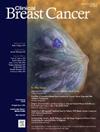The Construction of a New Prognostic Model of Breast Cancer and the Exploration of Drug Sensitivity Based on Machine Learning for Glycosylation-Related Genes
IF 2.5
3区 医学
Q2 ONCOLOGY
引用次数: 0
Abstract
Aims
Breast cancer has become the number 1 killer threatening women's health. In recent years, glycosylation modification has played an increasingly important role in tumor progression. The aim of this study was to explore the key genes that may be involved in glycosylation modification, establish prognostic models, and further explore their biological functions.
Methods
Using data from TCGA and GEO databases, differentially expressed genes (DEGs) were identified. Subsequently, Gene Ontology (GO) and Kyoto Encyclopedia of Genes and Genomes (KEGG) pathway enrichment analyses were conducted to characterize the functions of the DEGs. LASSO regression analysis was performed to narrow down hub genes. Additionally, single-cell analysis, protein-protein interaction (PPI) network analysis, immune correlation analysis, drug sensitivity analysis, and molecular docking were carried out to investigate the functions of these hub genes.
Results
Initially, we identified 110 differentially expressed prognostic genes, among which 89 were potentially associated with glycosylation modification. Enrichment analysis revealed their involvement in oxytocin signaling, chemical carcinogen-DNA adduct formation, and C-type lectin receptor pathways. LASSO regression (Least Absolute Shrinkage and Selection Operator) analysis further refined the selection to 24 hub genes, which exhibited specific genetic interactions. Notably, the expression levels of these genes showed significant associations with various immune cells. Drug sensitivity analysis of the hub genes highlighted methotrexate as a potential therapeutic candidate. Finally, molecular docking demonstrated strong binding affinities between the target receptors and ligands.
Conclusions
In conclusion, we screened glycosylation-related Hub genes, constructed prognostic models, explored their biological functions, and proposed new insights for diagnosing and treating breast cancer.
基于糖基化相关基因机器学习的乳腺癌预后新模型构建及药物敏感性探索。
目的:乳腺癌已成为威胁女性健康的头号杀手。近年来,糖基化修饰在肿瘤进展中起着越来越重要的作用。本研究旨在探索可能参与糖基化修饰的关键基因,建立预后模型,并进一步探讨其生物学功能。方法:利用TCGA和GEO数据库的数据,鉴定差异表达基因(DEGs)。随后,通过基因本体(GO)和京都基因与基因组百科全书(KEGG)途径富集分析来表征deg的功能。采用LASSO回归分析缩小中心基因范围。并通过单细胞分析、蛋白-蛋白相互作用(PPI)网络分析、免疫相关分析、药物敏感性分析、分子对接等方法对这些枢纽基因的功能进行研究。结果:最初,我们确定了110个差异表达的预后基因,其中89个可能与糖基化修饰相关。富集分析显示它们参与催产素信号,化学致癌- dna加合物形成和c型凝集素受体途径。LASSO回归(最小绝对收缩和选择算子)进一步将选择细化到24个中心基因,这些中心基因表现出特定的遗传相互作用。值得注意的是,这些基因的表达水平与各种免疫细胞有显著的关联。中心基因的药物敏感性分析突出了甲氨蝶呤作为潜在的治疗候选者。最后,分子对接表明靶受体和配体之间具有很强的结合亲和力。结论:筛选糖基化相关Hub基因,构建预后模型,探索其生物学功能,为乳腺癌的诊断和治疗提供新的思路。
本文章由计算机程序翻译,如有差异,请以英文原文为准。
求助全文
约1分钟内获得全文
求助全文
来源期刊

Clinical breast cancer
医学-肿瘤学
CiteScore
5.40
自引率
3.20%
发文量
174
审稿时长
48 days
期刊介绍:
Clinical Breast Cancer is a peer-reviewed bimonthly journal that publishes original articles describing various aspects of clinical and translational research of breast cancer. Clinical Breast Cancer is devoted to articles on detection, diagnosis, prevention, and treatment of breast cancer. The main emphasis is on recent scientific developments in all areas related to breast cancer. Specific areas of interest include clinical research reports from various therapeutic modalities, cancer genetics, drug sensitivity and resistance, novel imaging, tumor genomics, biomarkers, and chemoprevention strategies.
 求助内容:
求助内容: 应助结果提醒方式:
应助结果提醒方式:


